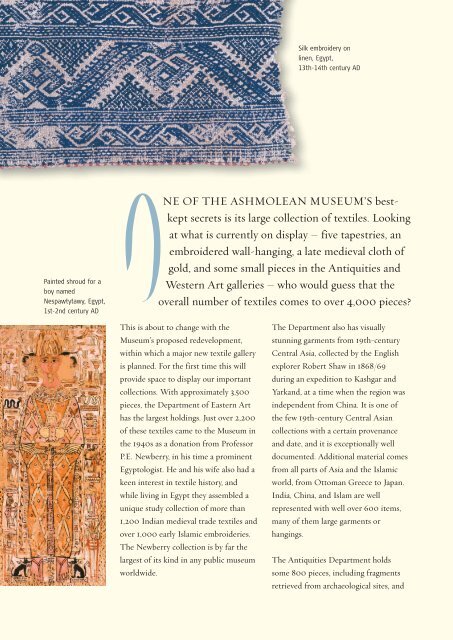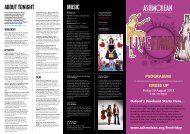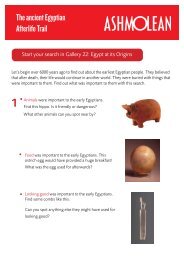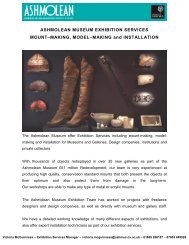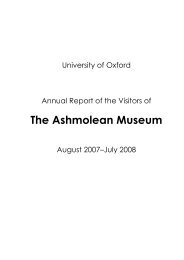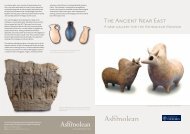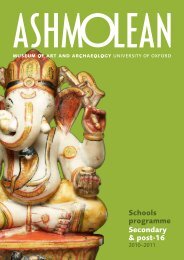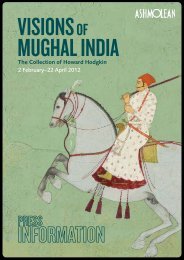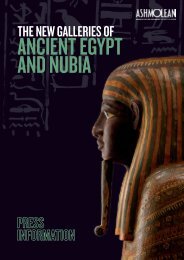Textiles Gallery - The Ashmolean Museum
Textiles Gallery - The Ashmolean Museum
Textiles Gallery - The Ashmolean Museum
You also want an ePaper? Increase the reach of your titles
YUMPU automatically turns print PDFs into web optimized ePapers that Google loves.
Silk embroidery on<br />
linen, Egypt,<br />
13th-14th century AD<br />
Painted shroud for a<br />
boy named<br />
Nespawtytawy, Egypt,<br />
1st-2nd century AD<br />
O<br />
This is about to change with the<br />
<strong>The</strong><br />
NE OF THE ASHMOLEAN MUSEUM’S bestkept<br />
secrets is its large collection of textiles. Looking<br />
at what is currently on display – five tapestries, an<br />
embroidered wall-hanging, a late medieval cloth of<br />
gold, and some small pieces in the Antiquities and<br />
Western Art galleries – who would guess that the<br />
overall number of textiles comes to over 4,000 pieces?<br />
<strong>Museum</strong>’s proposed redevelopment,<br />
within which a major new textile gallery<br />
is planned. For the first time this will<br />
provide space to display our important<br />
collections. With approximately 3,500<br />
pieces, the Department of Eastern Art<br />
has the largest holdings. Just over 2,200<br />
of these textiles came to the <strong>Museum</strong> in<br />
the 1940s as a donation from Professor<br />
P.E. Newberry, in his time a prominent<br />
Egyptologist. He and his wife also had a<br />
keen interest in textile history, and<br />
while living in Egypt they assembled a<br />
unique study collection of more than<br />
1,200 Indian medieval trade textiles and<br />
over 1,000 early Islamic embroideries.<br />
<strong>The</strong> Newberry collection is by far the<br />
largest of its kind in any public museum<br />
worldwide.<br />
Department also has visually<br />
stunning garments from 19th-century<br />
Central Asia, collected by the English<br />
explorer Robert Shaw in 1868/69<br />
during an expedition to Kashgar and<br />
Yarkand, at a time when the region was<br />
independent from China. It is one of<br />
the few 19th-century Central Asian<br />
collections with a certain provenance<br />
and date, and it is exceptionally well<br />
documented. Additional material comes<br />
from all parts of Asia and the Islamic<br />
world, from Ottoman Greece to Japan.<br />
India, China, and Islam are well<br />
represented with well over 600 items,<br />
many of them large garments or<br />
hangings.<br />
<strong>The</strong> Antiquities Department holds<br />
some 800 pieces, including fragments<br />
retrieved from archaeological sites, and


